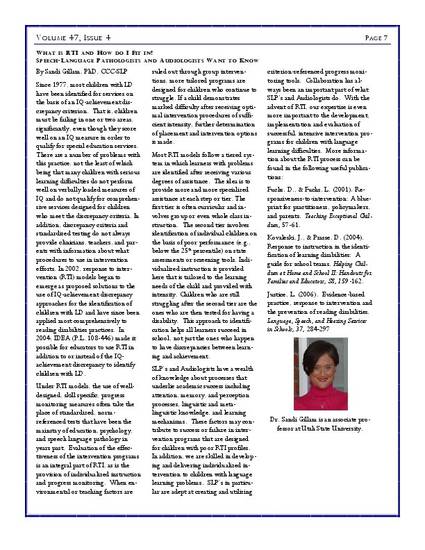
Since 1977, most children with LD have been identified for services on the basis of an IQ-achievement discrepancy criterion. That is, children must be failing in one or two areas, significantly, even though they score well on an IQ measure in order to qualify for special education services. There are a number of problems with this practice, not the least of which being that many children with serious learning difficulties do not perform well on verbally loaded measures of IQ and do not qualify for comprehensive services designed for children who meet the discrepancy criteria. In addition, discrepancy criteria and standardized testing do not always provide clinicians, teachers, and parents with information about what procedures to use in intervention efforts. In 2002, response to intervention (RTI) models began to emerge as proposed solutions to the use of IQ-achievement discrepancy approaches for the identification of children with LD and have since been applied most comprehensively to reading disabilities practices. In 2004, IDEA (P.L. 108-446) made it possible for educators to use RTI in addition to or instead of the IQachievement discrepancy to identify children with LD.
